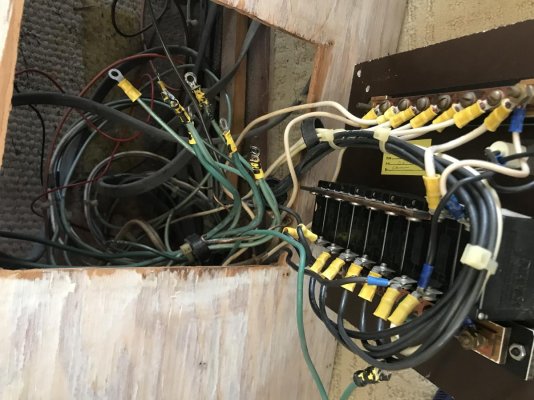Polar777
Member
Hello Folks,
I have a concern about my A/C electrical system and would appreciate any help the group can give.
I have a 1980 Mainship in salt water at a marina, usually connected to shore power.
Let me give you some background, at the beginning of last summer I had a fuel leak in my 15 year old fuel tanks due to electrolysis. The tanks were installed, I think poorly, with dissimilar metals attached. In any case the zincs were in good shape, so I decided to install a galvanic isolator.
When doing the work I found that all of the ground wires were intentionally removed and taped so as to not touch each other.
Does anyone have a guess as to why someone would intentionally do this?
Could this have produced my tank electrolysis in the first place?
I have plenty of experience with AC on the land but none on water. I will get an electrician in to do the work but I have a feeling there is more to this than meets the eye, so I would like to understand what is going on.
Thanks in advance for your help.
I have a concern about my A/C electrical system and would appreciate any help the group can give.
I have a 1980 Mainship in salt water at a marina, usually connected to shore power.
Let me give you some background, at the beginning of last summer I had a fuel leak in my 15 year old fuel tanks due to electrolysis. The tanks were installed, I think poorly, with dissimilar metals attached. In any case the zincs were in good shape, so I decided to install a galvanic isolator.
When doing the work I found that all of the ground wires were intentionally removed and taped so as to not touch each other.
Does anyone have a guess as to why someone would intentionally do this?
Could this have produced my tank electrolysis in the first place?
I have plenty of experience with AC on the land but none on water. I will get an electrician in to do the work but I have a feeling there is more to this than meets the eye, so I would like to understand what is going on.
Thanks in advance for your help.

